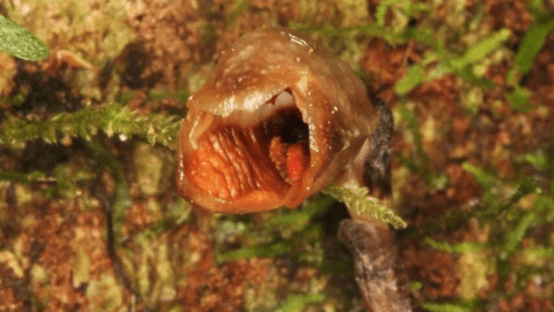Can you believe it is an orchid? But it is indeed an orchid, a new species just discovered in Madagascar, known as the ugliest orchid in the world, and one of the strangest and most curious plant species discovered in 2020.
Although human beings have been carrying out environmental and biological abuses to the earth, dozens of new plants can still be discovered every year in the world. In 2020 of the disaster, biologists have never stopped exploring and researching.
As many as 156 new species have been included in the “list of plants” in the existing reference list compiled by the Royal Botanic Garden in London, and its new members include “The Ugliest Orchid in the World”.
In this discovery, orchid species accounted for the majority, and as many as one-third of the new species came from this family. For example, they discovered 19 species of orchids this time. The most striking is an orchid with small brown flowers that is completely unlike orchids.
Biologists in London call it “the ugliest orchid in the world.” The above has nothing to do with the orchid plants we are used to seeing. It is shade-loving, has no leaves, is brown, and has full fleshy texture. It looks a bit scary and disgusting, but it smells of citrus and roses.
Martin Cheek, a biologist at the London Botanic Garden, said in a statement: “Most people think orchids are beautiful, but they found this orchid in the forests of Madagascar this year.
The opposite is true. It has flowers that are only 11 mm long. Small and quite ugly”. This species has been listed as one of the protected species.
In addition, scientists have also discovered other peculiar new species: including six new British fungi and a potato-related plant from Peru. Scientists say they cannot rule out its use as a food source in the future.
There is also a strange and rare shrub that grows in the arid region of Namibia. This shrub has few leaves and grows in the desert. Because of the harsh weather conditions, only less than a thousand copies remain.
A pineapple-related plant was also found in Brazil. It was pollinated by hummingbirds.
The biologist explained: “It grows on limestone cliffs in central Brazil, but due to the need to mine limestone to make cement, this plant is on the verge of extinction. .
Despite these incredible discoveries, Martin Cheek, a biologist at the London Botanic Garden, issued a warning: “The tragic reality we face cannot be underestimated.
Two out of five endangered plants are looking for before they disappear. , Identifying, naming and protecting them, we are racing against time.”.
Perhaps these new plant species discovered in 2020 also represent hope, allowing us to ignite our expectations for a new life in 2021.



